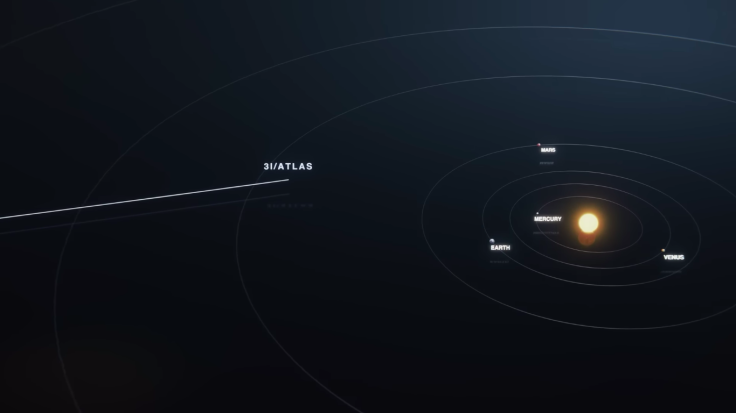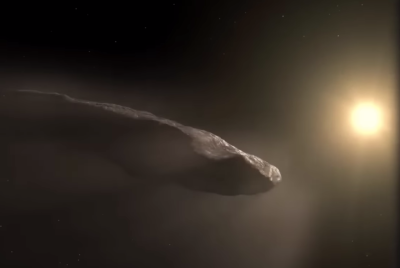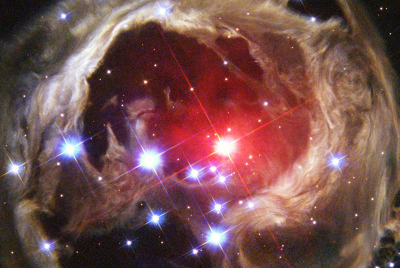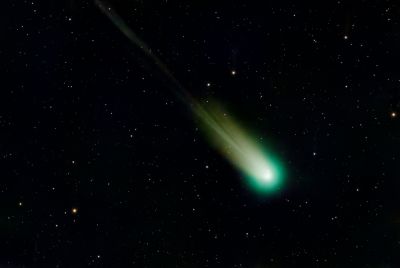China Exposes What NASA Hid? Truth Behind Mysterious 3I/ATLAS Images That Suddenly Went Dark

Claims that China's space agency revealed concealed NASA data on the interstellar comet 3I/ATLAS have swept social media, but no credible evidence supports the theory.
Both NASA and the China National Space Administration (CNSA) have released no new imagery since the comet's October fly-by near Mars, sparking speculation online that the agencies are withholding information.
What We Know About 3I/ATLAS
Discovered on 1 July 2025 by the Asteroid Terrestrial-impact Last Alert System (ATLAS) telescope in Chile, 3I/ATLAS is only the third known interstellar object, following 'Oumuamua (2017) and Borisov (2019), according to NASA's Solar System Exploration division.
Early Hubble Space Telescope images showed an icy nucleus surrounded by a faint halo. At the same time, the James Webb Space Telescope (JWST) detected unusually high levels of carbon dioxide in the comet's coma. A preprint study on arXiv noted that its CO₂-to-water ratio is 'among the highest ever recorded,' suggesting it formed in a much colder region than typical Solar System comets.
Why the 3I/ATLAS photos 'went dark'
When 3I/ATLAS passed near Mars on 3 October, several orbiters were positioned to photograph it. Yet no high-resolution photos have been publicly released.
A report by Gadgets 360 says the ExoMars Trace Gas Orbiter captured rare close-ups as the object sped past at over 130,000 mph, but the images showed only a faint gas halo and no visible tail.
The silence from both NASA and the China National Space Administration (CNSA) quickly sparked conspiracy theories online.
A Reddit thread titled 'The Chinese silence on 3I/ATLAS is more concerning than NASA's' speculated that 'three days after the Mars fly-by, there were still zero official images from any space agency.'
It added: 'If this were an ordinary comet, China would have released pictures immediately to upstage NASA.'
Is China Really Revealing What NASA Hid?
So far, no official Chinese release has surfaced to support the claims that Beijing is 'exposing' hidden NASA data.
In fact, China's Tianwen-1 probe, which has previously published over 14,000 Mars images, has made no statement about 3I/ATLAS.
Some observers, including space journalists' accounts on Reddit, have suggested that the lack of new material from both agencies likely reflects data-processing delays rather than deliberate secrecy.
As of now, neither NASA nor CNSA has confirmed any irregularities or classified findings.
Experts told IBTimes UK that the absence of imagery could stem from technical and administrative hurdles--including US budget constraints that reportedly slowed NASA communications in early October.
NASA's public communications slowdown in early October coincided with a brief US government funding lapse that forced the agency to suspend updates and restrict non-essential operations.
In a notice posted on its Research Opportunities in Space and Earth Sciences (ROSES) website on October 1, NASA stated that 'as long as the lapse in funding continues, civil servant points of contact for NASA programs will be unable to respond and this blog will not be updated.'
NASA's Position and Scientific View
NASA has maintained in its official overview that 3I/ATLAS is an interstellar comet on a hyperbolic trajectory and poses no threat to Earth.
The agency said its high CO₂ content offers valuable clues about the composition of materials beyond the Solar System.
A Wired report called 3I/ATLAS 'a rare opportunity for astronomers to observe a visitor from another star system.'
On the other hand, the Times of India highlighted Hubble's imagery showing the object racing through the Solar System at 130,000 mph.
Why the Delay Matters
Scientists explain that interstellar objects are notoriously difficult to image. The Mars fly-by occurred tens of millions of kilometres away--too far for most orbiter cameras to capture useful detail.
Moreover, agencies often withhold raw data until calibration and validation are complete, a process that can take weeks.
The apparent 'radio silence,' experts say, is not unusual. Both ʻOumuamua and Borisov experienced similar delays as agencies verified their findings before publication.
As one Reddit user noted, 'What they're waiting on isn't data — it's analysis or approval."
The Road Ahead
NASA expects to release additional findings once 3I/ATLAS reaches perihelion in late October 2025, when it will be closest to the Sun and most visible.
Future studies using JWST and ground-based telescopes are expected to refine measurements of its composition and brightness, which could confirm whether its CO₂ signature is unique among interstellar bodies, according to Live Science.
For now, the claim that 'China exposed what NASA hid' remains unsupported by evidence.
The continuing data blackout may frustrate skywatchers, but astronomers urge patience-- reminding the public that interstellar science moves far slower than the rumours that surround it.
© Copyright IBTimes 2025. All rights reserved.





















